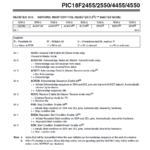ranoguitar
Junior Member level 1

I have been stuck on this display for over a month, tried many codes, converted different codes, tried bit banging, i2c library, soft i2c library, i bought 3 displays in case any are faulty. I read the datasheets of the pic 18f4523 and the st7036i. i cannot get a thing to show. I have fet's set up for voltage difference 5v-3.3v. double checked all my wiring, set up a rs232 to pc for debuging. the only thing i dont know is how to do it. i need a little help. i am new to i2c.
I with debuging, i can watch the program move through. i set up a function,,,
this always writes "ack" to uart. never "no ack".
so i removed the wires to the lcd and the code still sayed ack. i just am lost.
I with debuging, i can watch the program move through. i set up a function,,,
Code C - [expand]
this always writes "ack" to uart. never "no ack".
so i removed the wires to the lcd and the code still sayed ack. i just am lost.
Last edited by a moderator:


